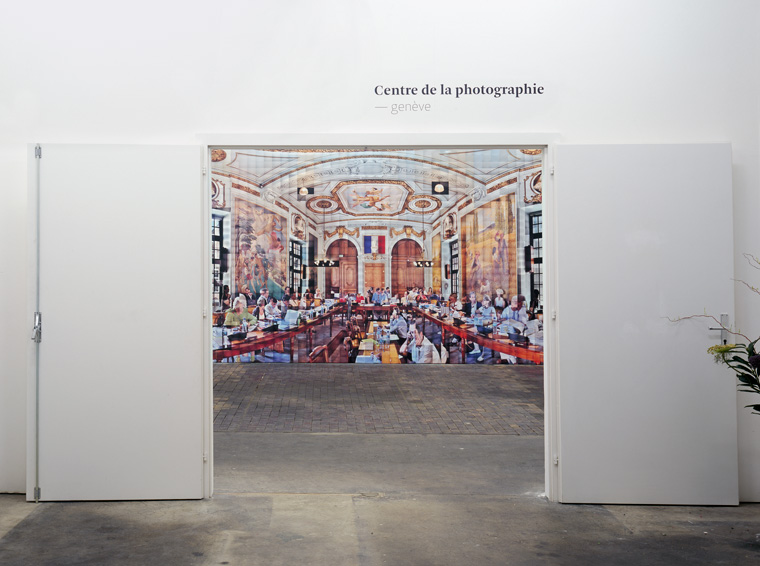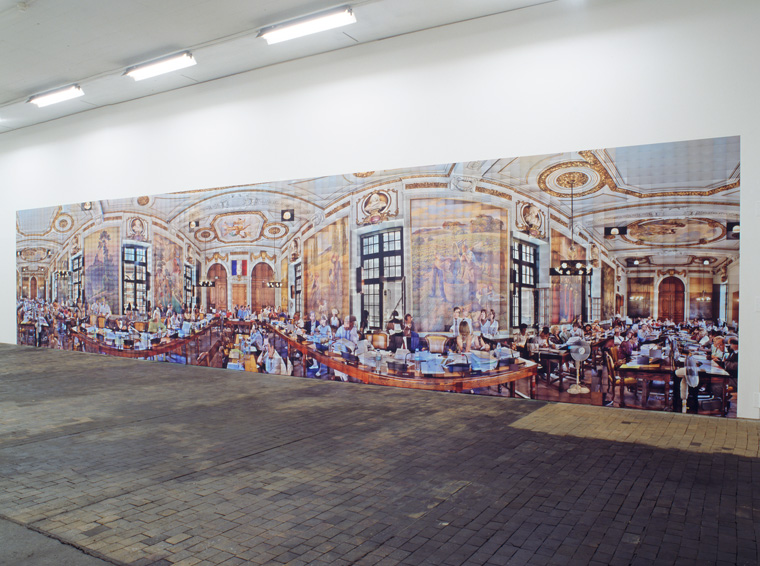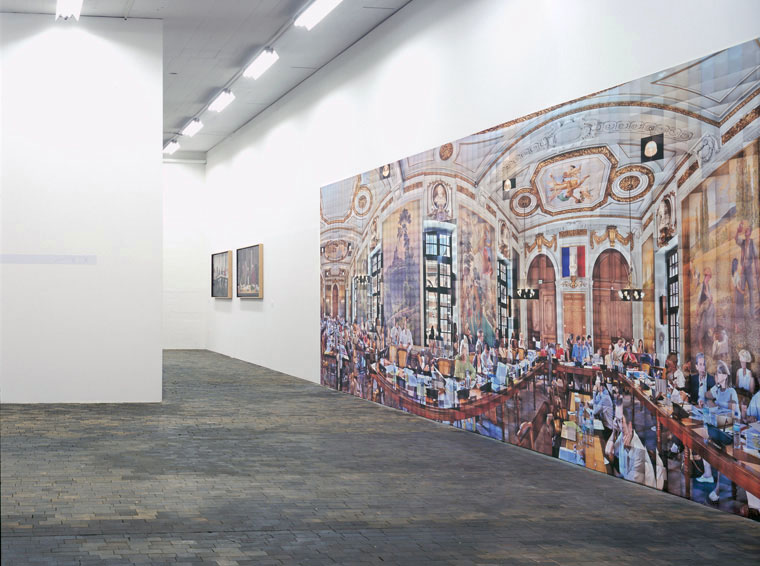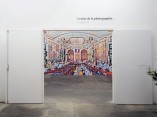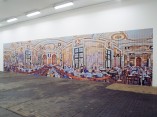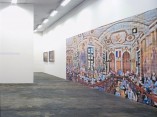PANORAMIC SCENES
The Photography Center, Geneva 14 MARCH – 11 MAY 2008
With Edward Burtynsky, Carl De Keyzer, Luc Delahaye, Armin Linke, Paul Shambroom, Jules Spinatsch, Michael von Graffenried
The exhibition PANORAMIC SCENES emphasises a photographic practice that has gathered momentum since the beginning of the 21st century: the use of the panoramic format in reportage and documentary photography, not as a means to show landscapes but to depict scenes of contemporary human life. Although this phenomenon can also be seen in art photography, from Daniel Berclaz to Sam Taylor-Wood, PANORAMIC SCENES exclusively focuses on practices that are related to political and social situations.
Panorama means “seeing everything” in ancient Greek. The panoramic format, as it was developed by Robert Barker in the late 18th century, was aiming at a 360°, total illusion effect on the viewer. One was supposed to see real nature, as opposed to painted nature. According to Walter Benjamin, David advised his students not to draw from nature but from panoramas! An outcome of Renaissance perspective, these “vision machines”, oscillating between art and technology, fascinated through the feeling of omnipotence provided to the viewers: a subjective power that made them feel that they could have it all. In his book Das Panorama (Frankfurt, 1984), Stephan Oetermann wrote that panorama was the ultimate secularisation of the divine gaze. In Surveiller et punir, Michel Foucault relates the illusion machinery of panorama to the disciplinary construction of the Panopticon. In both cases, the viewer is at the centre of the perceptible world. In the case of the panorama, free from any monitoring system, the gaze generates a feeling of omnipotence in the gazer. It is true that the crisis of painting in the second half of the 19th century was already related to the existence of panorama, as painting’s reaction to the discovery of the horizon. The panorama could be seen as a democratisation of perspective, and considered one of the first mass media. Remember that photography is also an offspring of panorama. In order to improve the perspective result of his painted panorama, Jacques Louis Mandé Daguerre managed to fix an optical image onto a iodised silver plate, by manipulating the camera obscura. As years went by, domes and circular buildings that housed panoramas have gradually disappeared from our cities, while photography took over as the best way to visually reproduce tangible reality. The first panoramic cameras came out very early, amongst which Friedrich Martens’s in 1845. Its 1:3 format took over as the best frame to represent landscapes of the colonised Far West or alpine tourism, for example. Ever since, the panoramic format has been used to glorify the beauty and the greatness of landscapes. Only since 1980 have reportage photographers started to use the panoramic format. Carl de Keyzer was one of the first, and Michael von Graffenried used it to be able to photograph the civil war in the 1990’s Algeria, in order not to lift his camera to his eye. It was also since the 1980’s that the formats of the photographic prints reached dimensions similar to historical paintings, in particular with artists who had studied with Bernd Becher. This enlarged representation field immerses the viewer in the deceptive space of the photograph. Obviously, the photographic format that best immerses the viewer is the panorama. For ten years or so, more and more reporters and documentary makers have used the panoramic format to represent contemporary social and political scenes. Without being exhaustive, the exhibition PANORAMIC SCENES attempts to review this new practice.
Since Temporary Discomfort IV in 2003, Jules Spinatsch has applied his system of methodical “scanning” of a given place to other situations, whether during a qualification football game for the World Cup 2006 between Switzerland and France, or the meeting of Toulouse city council on 30th June 2006, which is presented in PANORAMIC SCENES. The artist’s practice is double-edged indeed. While we are fascinated by the huge amount of information available to us, including the tiniest details that can be seen in large-scale blow-ups – such as the hand-written message left on a deputy’s desk, which gave the work its title Fabre n’est pas venu (Fabre didn’t turn up), the technique that Spinatsch uses can also turn into a fearsome, all-controlling weapon. There is a fine line between the panorama and the Panopticon.
